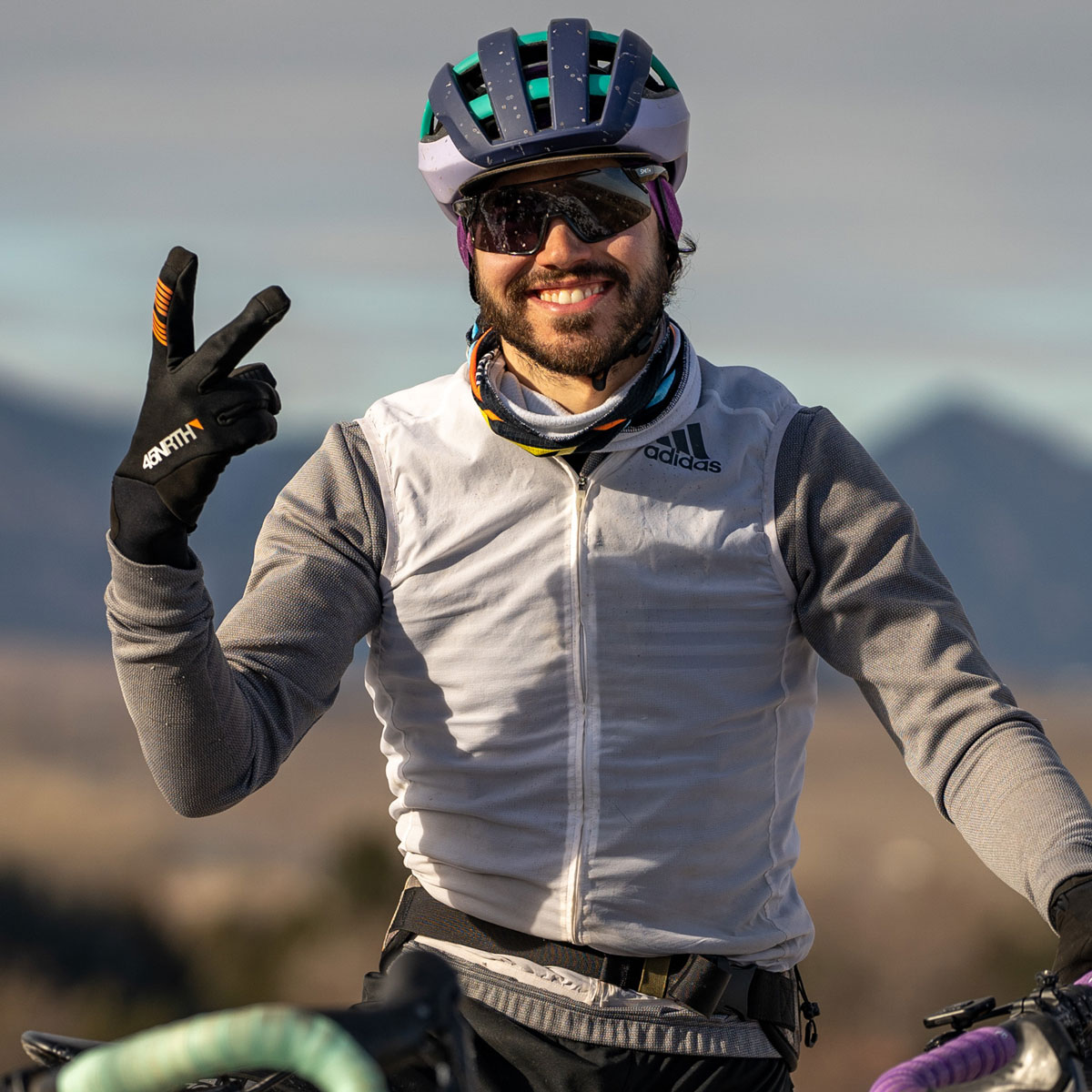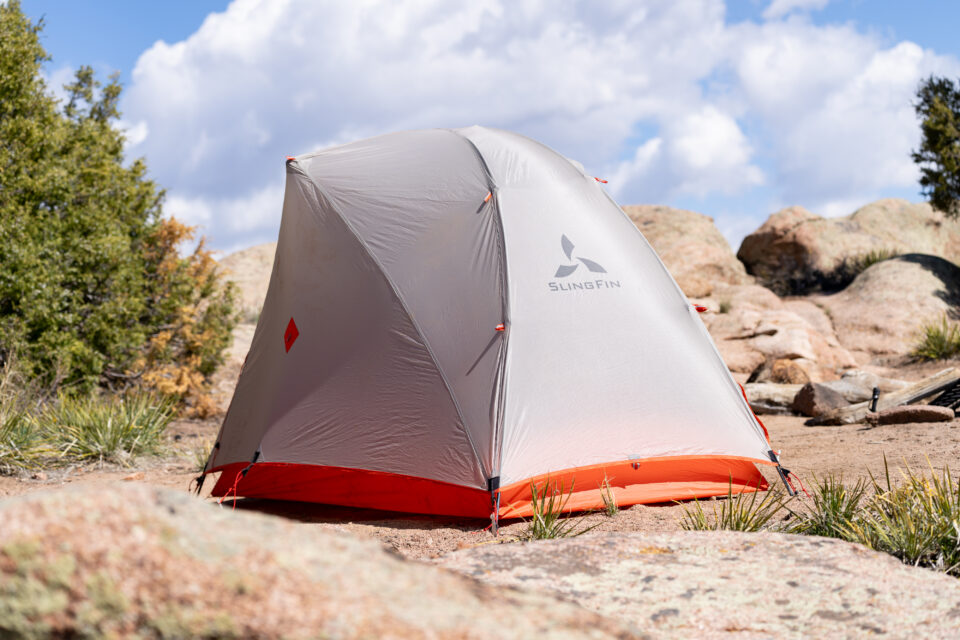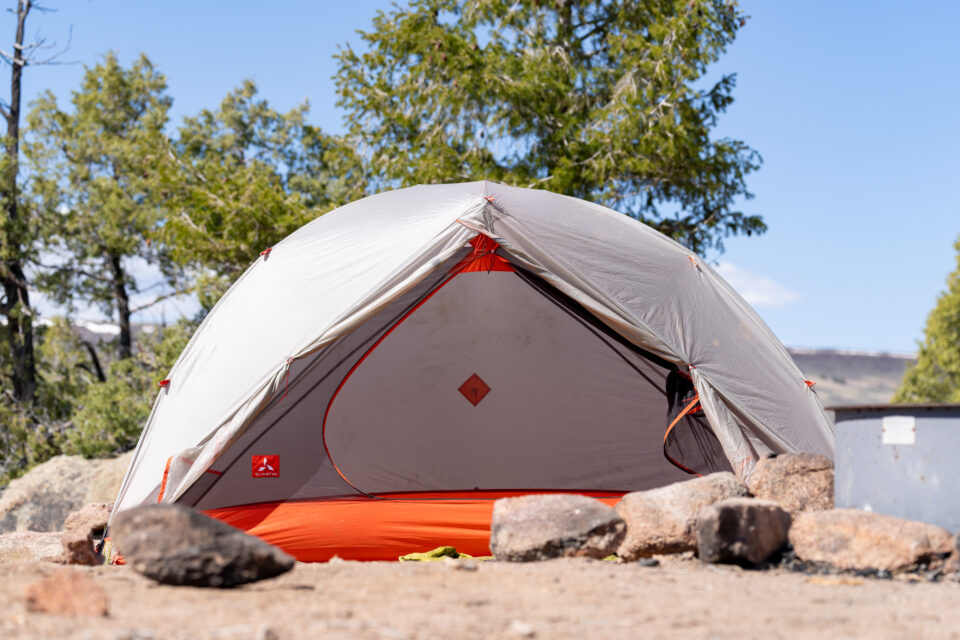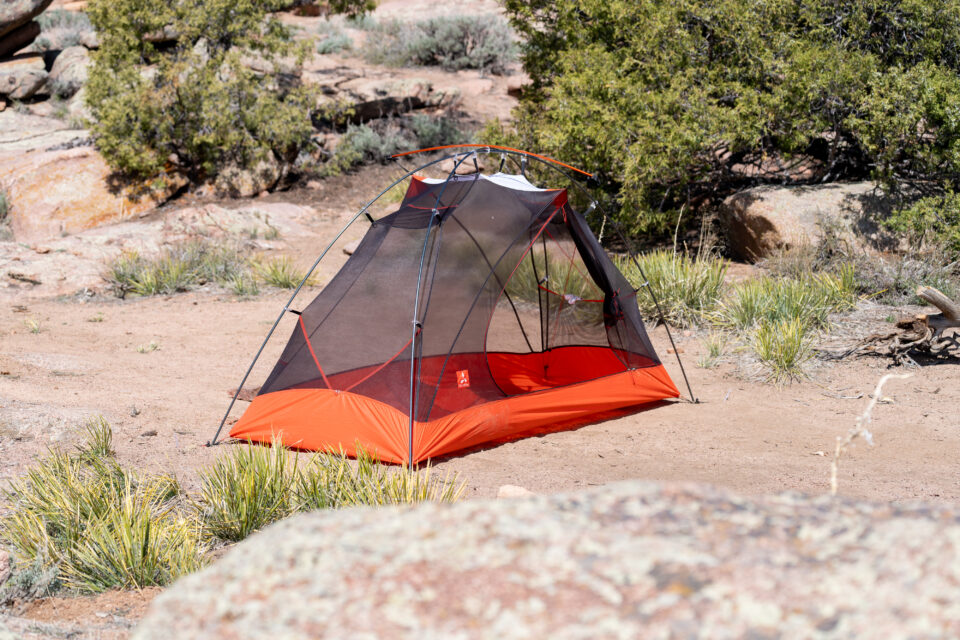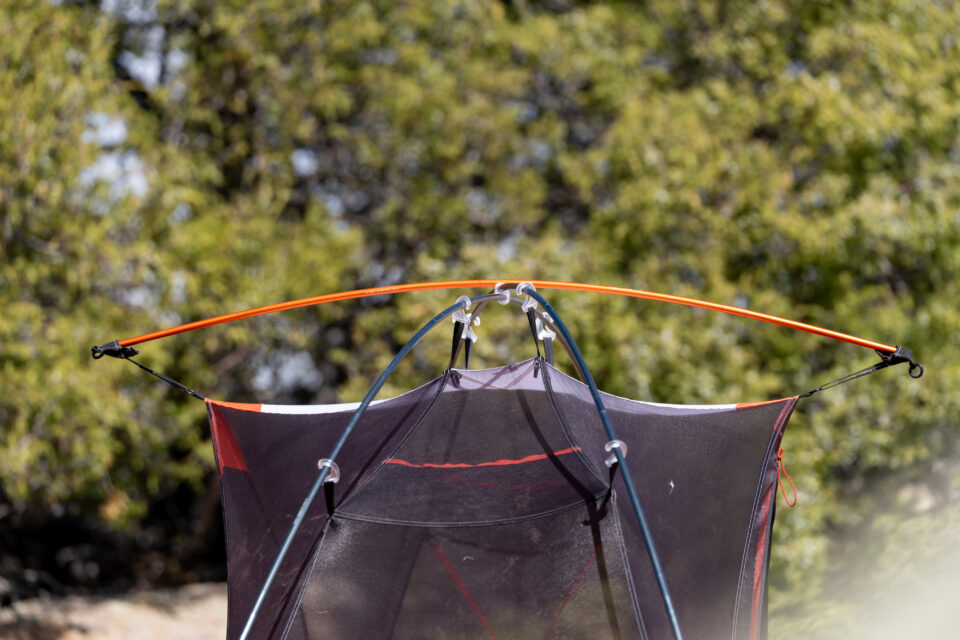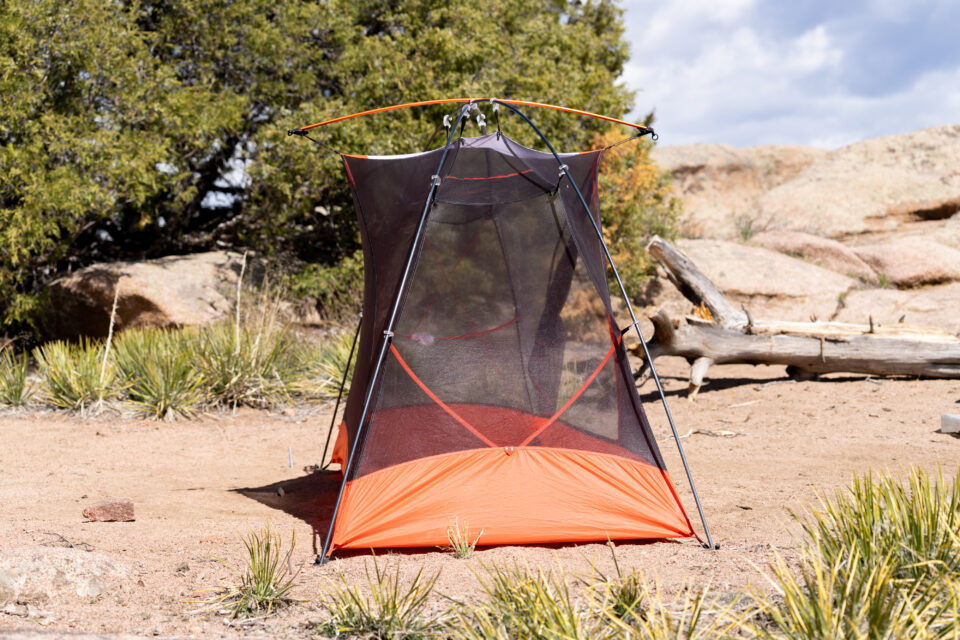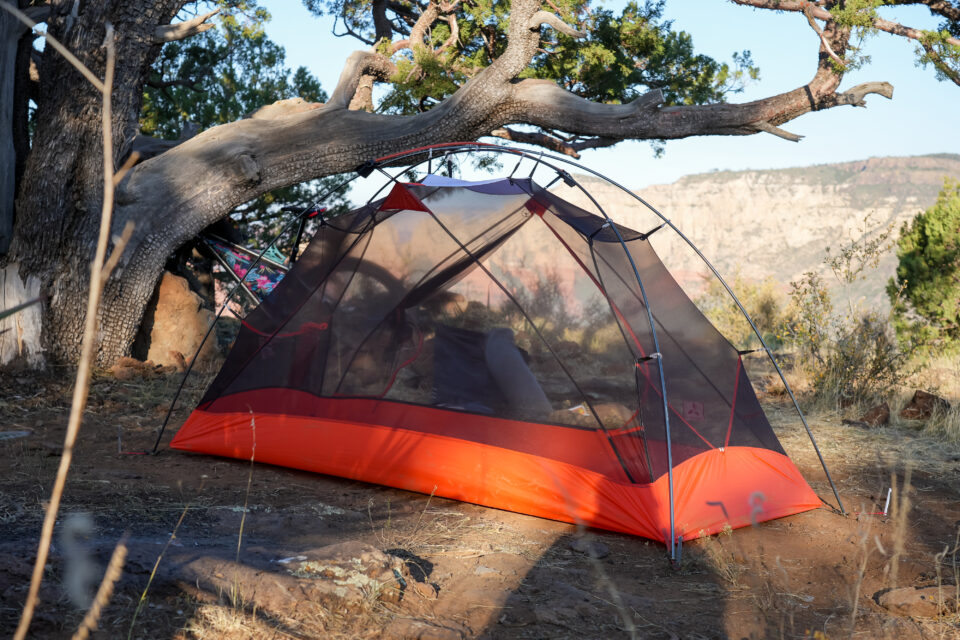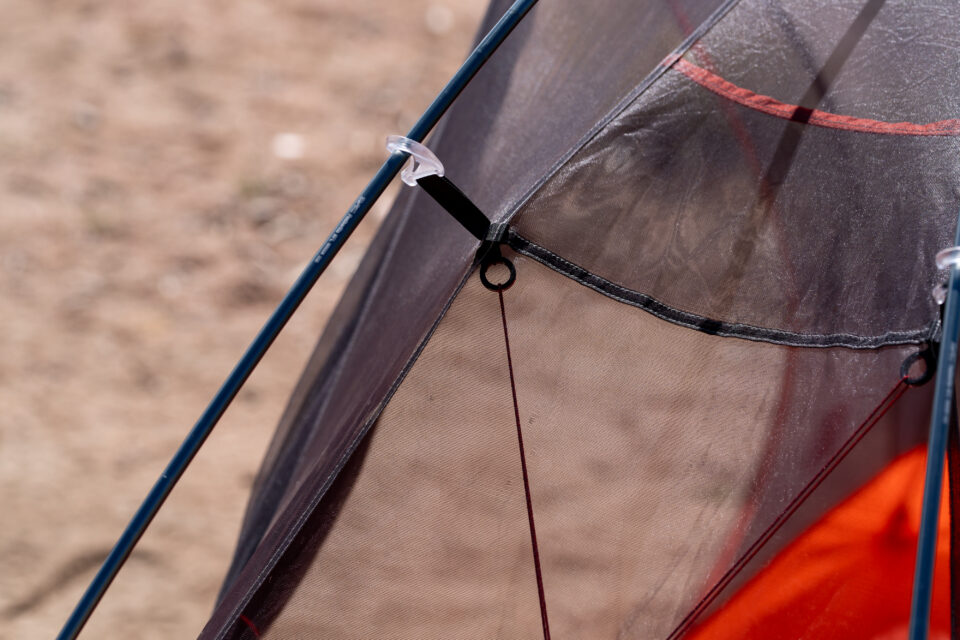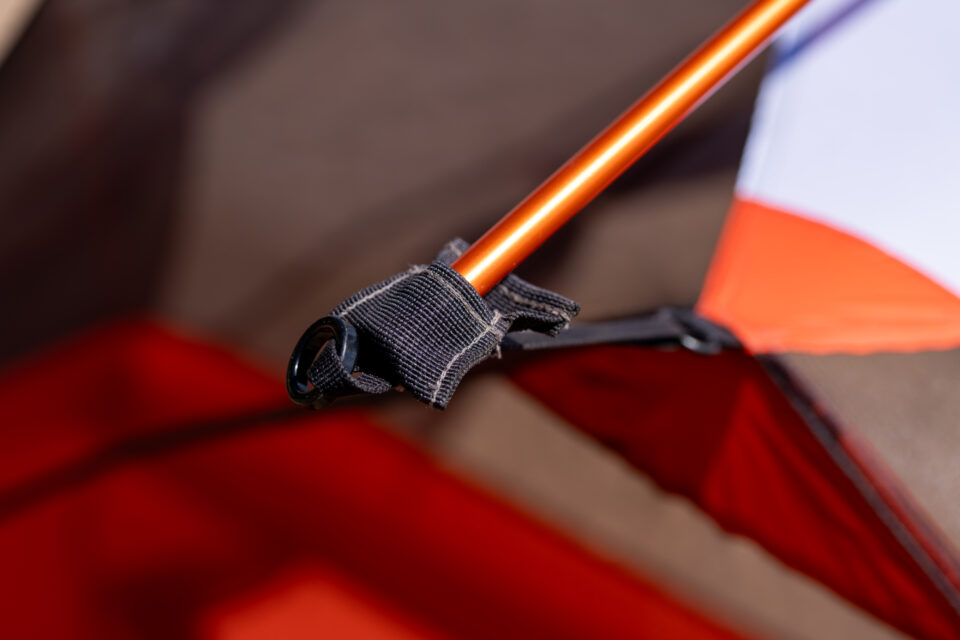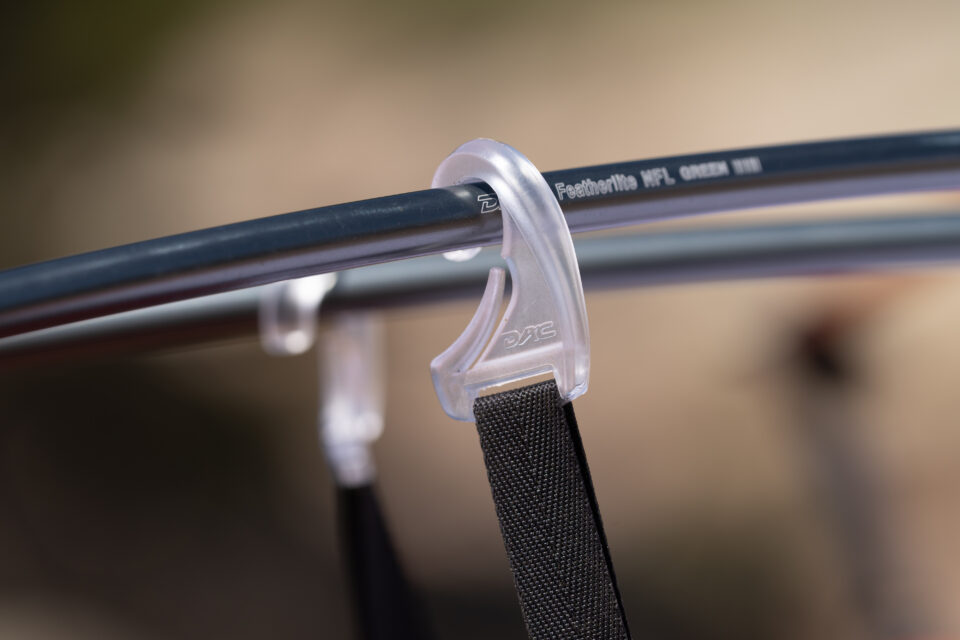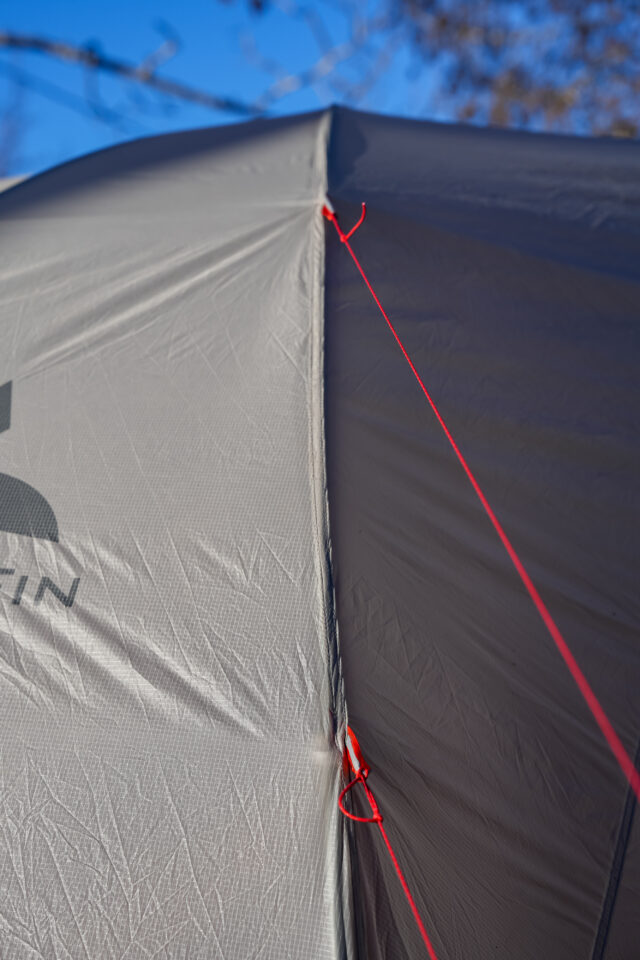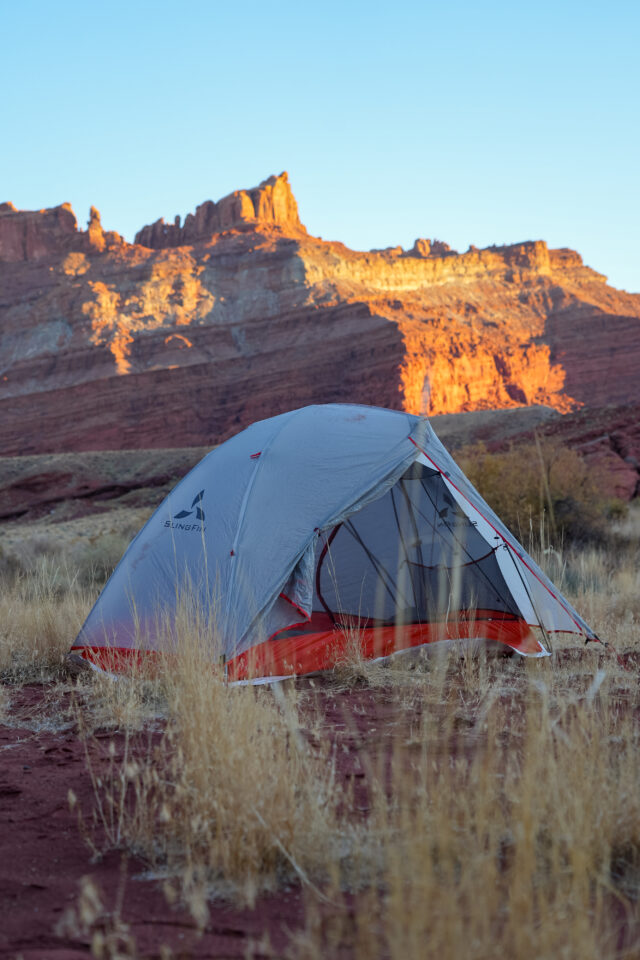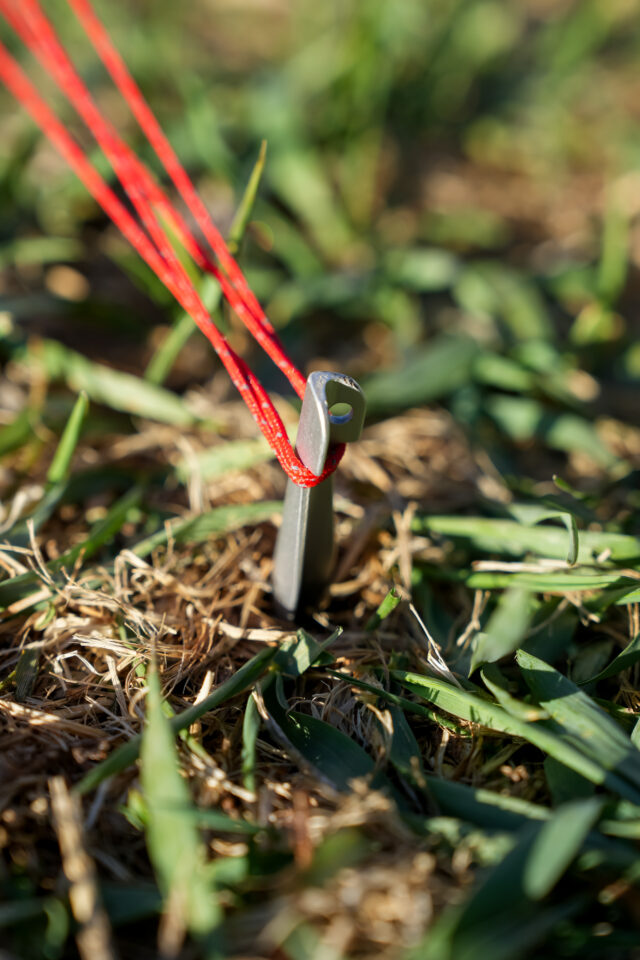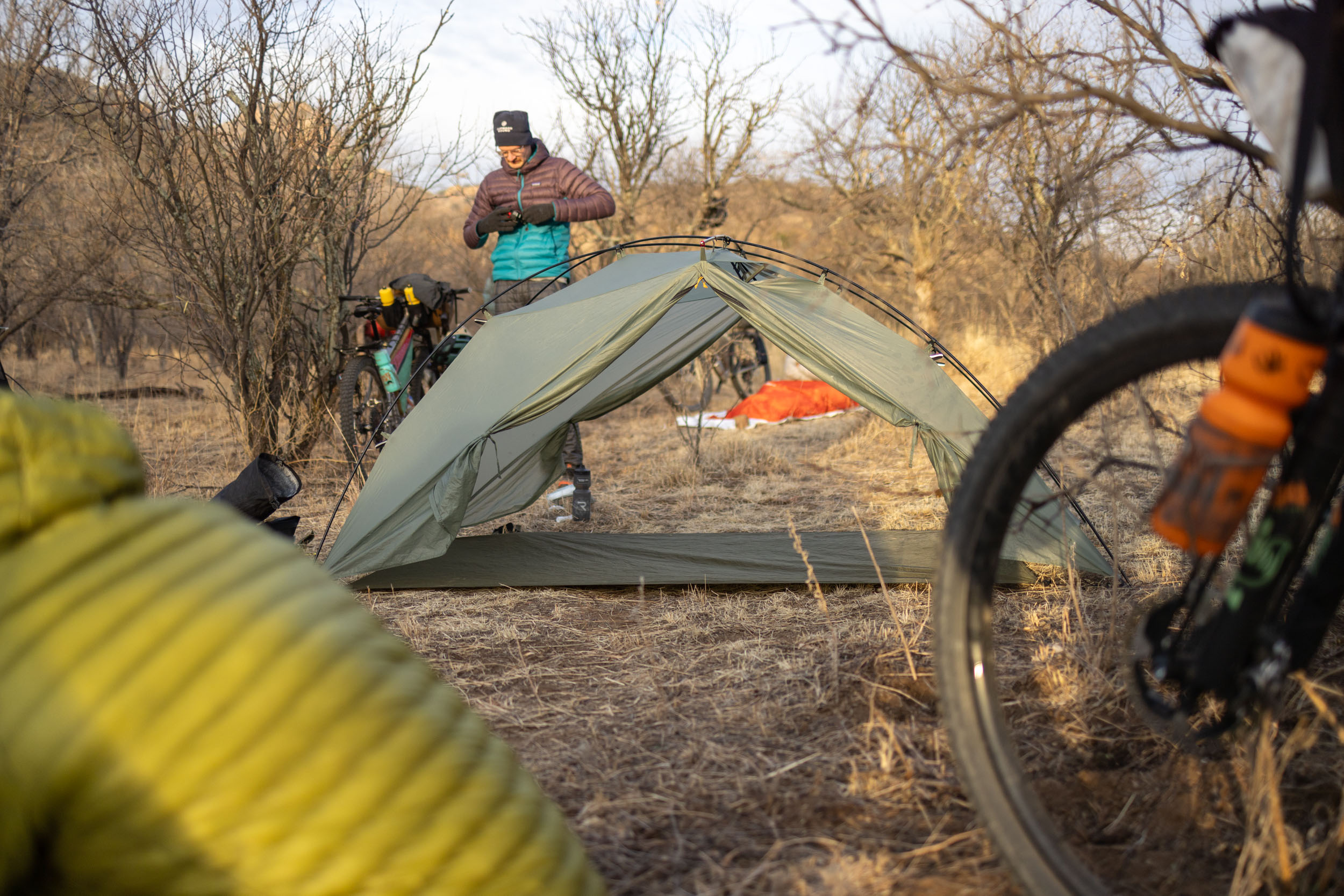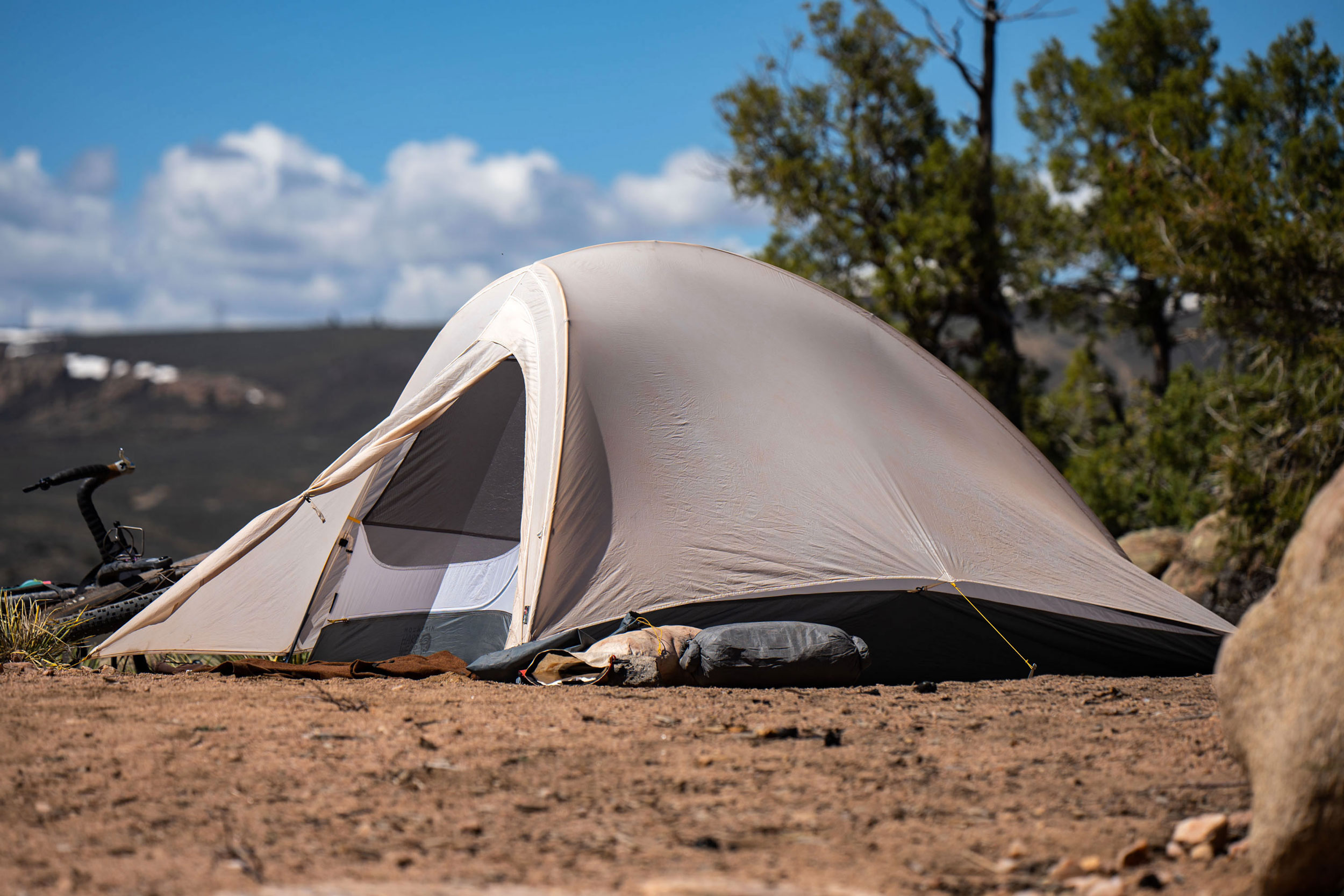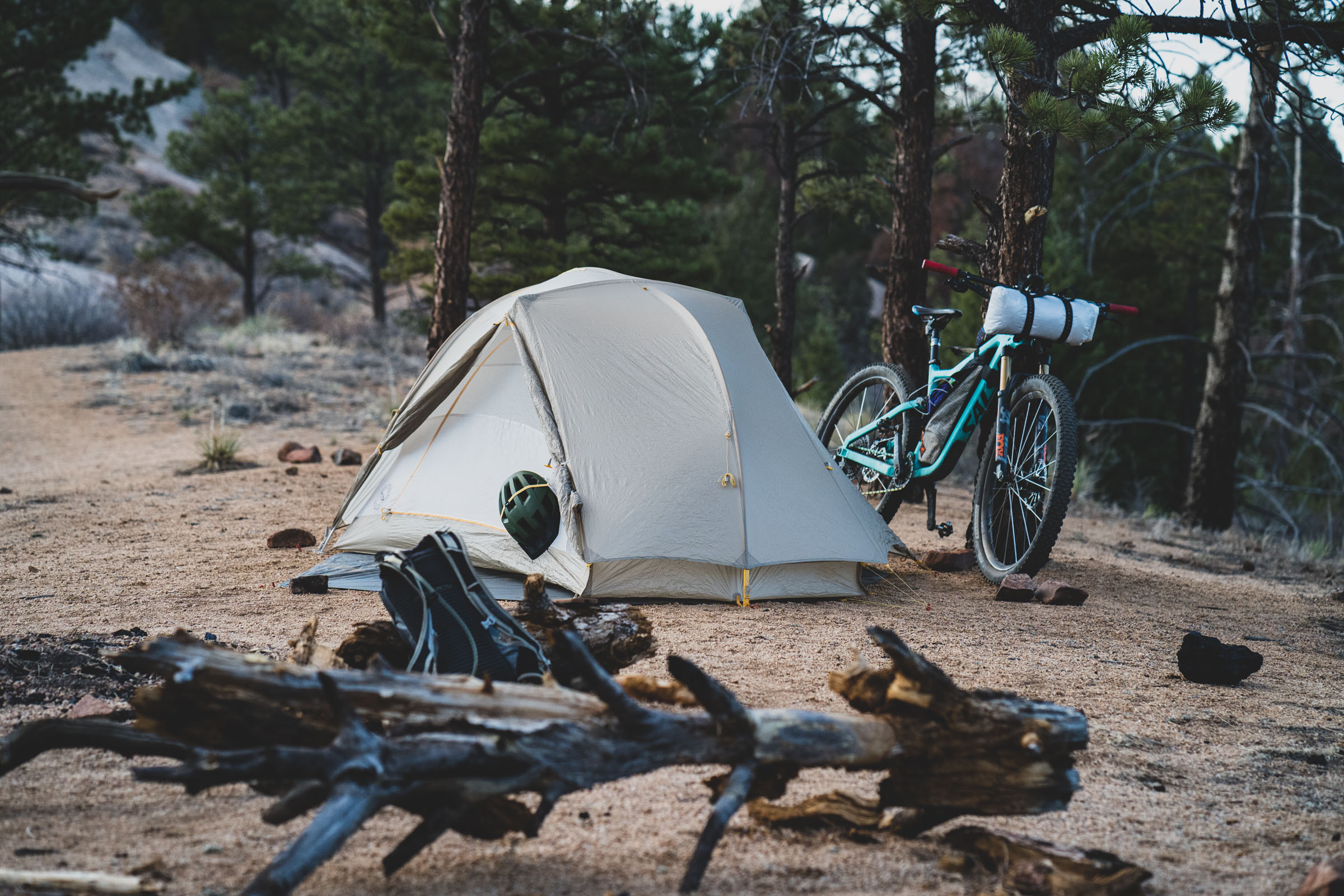SlingFin Portal 1 Tent Review: The Best 1-Person Tent?
A well-designed tent can mean the difference between a comfortable night out under the stars and a frustrating experience. After using the SlingFin Portal 1 on a handful of trips over the last few months, Neil found it to be a cozy home away from home with a few unique features that set it apart from other one-person tents. Find his SlingFin Portal 1 Tent Review here…
PUBLISHED Apr 29, 2024
Before getting my hands on this tent, I wasn’t familiar with SlingFin. The Berkeley, California-based tent brand consists of a team of three and is spearheaded by Martin Zemitis. Martin also co-founded Mountain Hardwear and crafted tents for Sierra Designs and The North Face. Following Columbia’s acquisition of Mountain Hardwear, Martin embarked on his own journey, giving birth to SlingFin. The employee-owned, self-funded brand is dedicated to using top-notch materials and incorporating user feedback in its designs.
Their lineup consists of a whopping 18 tents and tarps, split into three categories: the Minimalist Series, TreeLine Series, and Expedition Series. The Portal 1 is one of their most popular tents and is the lightest freestanding tent they offer—using the features customers loved about the two-person model but slimmed down for solo campouts. You can find my 15-minute video review below, followed by a written version with still photos.
SlingFin Portal 1 Specs and Details
The Sling Fin Portal 1 is a lightweight, single-person, single-door, three-season freestanding tent. It comes with a body, fly, 10 stakes, and eight guy lines, and it’s made with a cross-pole hubless system using two sets of straight DAC Featherlite poles. When folded up, the tent is just 13.5″ (34cm) long and weighs 2 pounds and 12 ounces, easily packing inside any handlebar roll or top-opening bag.

The tent body is constructed from a 15-denier nylon No-See-Um mesh with a bathtub-style floor made from PE-coated 20-denier nylon. The fly is made from a silicone-coated 10-denier 66 ripstop nylon. For reference, there are two different nylons used on gear like this: 6 and 66. Nylon 6 is made of a single monomer, and Nylon 66 is made with two monomers. Nylon 6 is less abrasion and UV resistant, absorbs more water, and has a lower tear strength than Nylon 66. In addition, SlingFin opted to use silicone-coated fabric for both sides of the fly, mentioning that dual-sided silicone coatings are longer lasting, more abrasion and UV-resistant, offer increased tear strength, and are virtually immune to mold and mildew growth. Finally, SlingFin uses PE-coated floors because they say they have a longer lifespan and better long-term waterproofness.
Nylon fabrics are a common tent material. However, the consensus is that polyester has better UV and stretch resistance, so I was intrigued when the team at SlingFin, who certainly seem obsessed with the details, did a UV and tensile strength test with several different fabrics. They found that UV damage occurs rapidly to tent fabrics of all weights, yet the 10-denier nylon was exceptionally UV-resistant. It could be because it’s a type 66 nylon and not 6, but the 40-denier Nylon 66 they tested fared significantly worse.
You can find details on their test here, which includes some interesting tips for storing your tent. The tent has loads of internal pockets. In fact, there are seven pockets total: two up top, one at the foot, four near the head of the tent, and four O-rings at the top of the tent for hanging lights, clothes, and other hangable stuff.
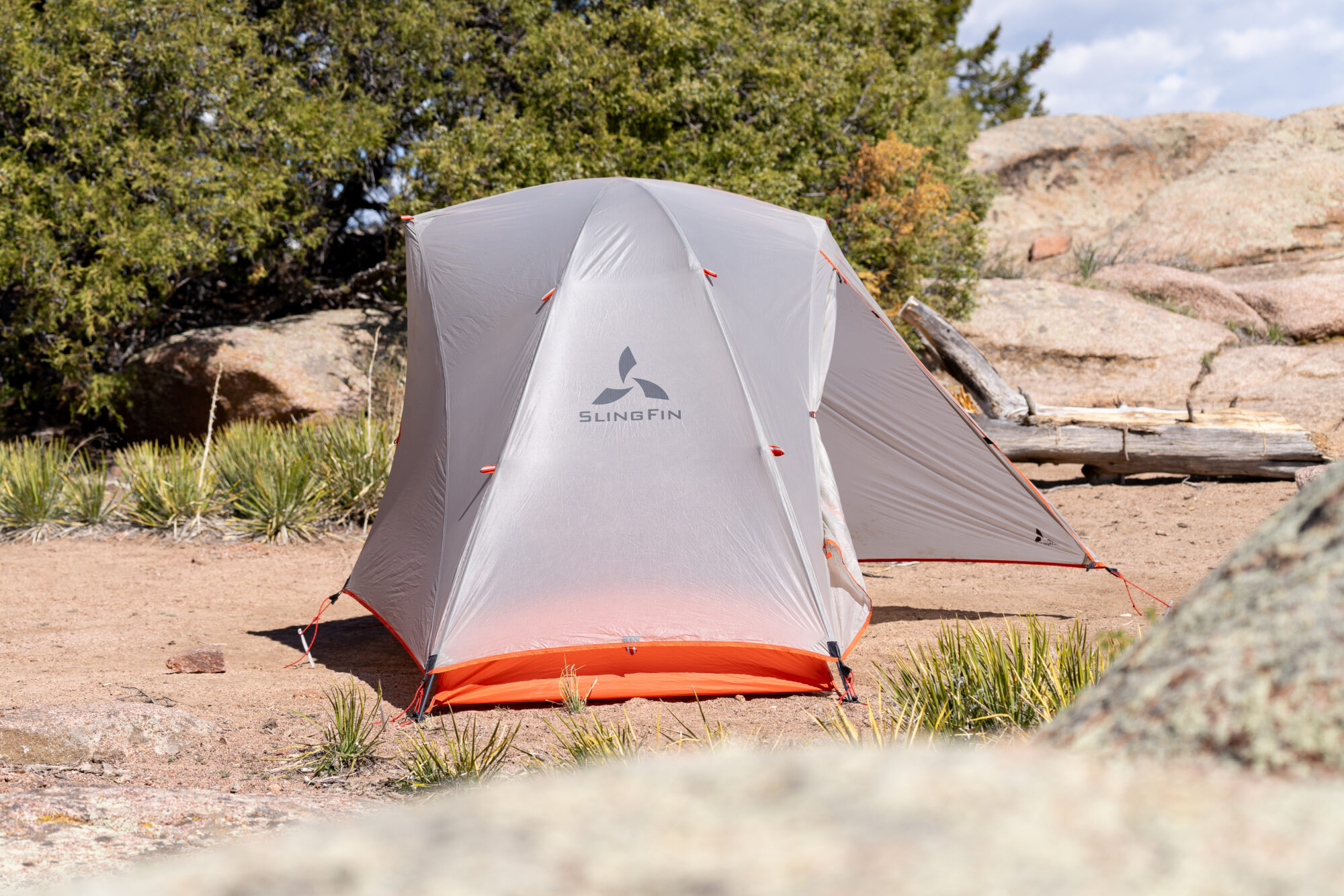
Setup and Takedown
After finding a flat spot, which is relatively easy with this one-person tent as opposed to mid-style tents, you will stake down four stakeouts with built-in pole grommets. The pole system attaches to the grommets at each corner, and the tent body’s clips attach to the poles. A small cross-pole sits over the main pole structure, and the ends are secured with small webbing sleeves.
When using the fly, you will want to find the reflective tab and match it with the one on the tent body. From there, install the fly toggles on the top of the tent to the O-ring on the tent body and continue down the line on each pole. SlingFin said they are not necessary, but they are helpful to manage wind, condensation, and moisture more effectively. After that, you attach the cords on the corner of the fly to the hooks on the body. Stake out the sides of the fly, and then tension the four corners of the fly. Overall, the tent setup is very intuitive.
If you’re in a very windy area, you can install guy lines from the many guy-out points on the tent. I tested this in a high-wind scenario, and they worked well, especially when paired with their internal guy lines. The tent fly comes with a buckle at the bottom to ensure a secure fit, and it has a zipper hood and velcro to ensure proper moisture control and closure. The tent also comes with a fly KickStand for high-condensation scenarios to help the tent breathe a bit more when necessary. The vestibule opens with either one door or a cord lock and loop, which was useful when I wanted to open the tent in the morning to enjoy some morning sunshine.
The vestibule area is big enough to store gear or cook in, and I tested both out during my review period. But the body of the tent is really where all the magic is. It has a massive U-shaped zipper that runs from the top to the bottom, giving you an enormous door for easy entry or exit. It comes with two zipper pulls, but SlingFin didn’t stop there. They mentioned zippers are the first thing to wear out in a tent, so they added pre-installed spare sliders if they break. The main compartment also has a cord lock to hold up the mesh door.

One of the most exciting features of the Portal 1 is the internal guy lines. At first, I wasn’t sure what they were for, but SlingFin says they add more lateral stability without extra weight. They come pre-installed on one side and, they send extra guy lines to install on the head end of the tent. While they also work well for drying out clothes, the purpose is more structural. Paired with the thoughtful placement of the internal guy line attachments and fly toggle attachment points, they all work together to reinforce the poles during high winds or snow.
Taking the tent down is just as easy as the setup. Because of the Portal 1’s freestanding nature, it was easy to un-stake the body from the ground and flip it on its side to remove any unwanted debris from the tent. It packs down to 14″ x 4″ (35 x 10cm), and while this isn’t quite as small as the Mountain Hardwear Nimbus I recently tested, it’s easy to pack in a handlebar bag or roll. Because the poles are shorter, they are also larger in diameter, which takes up room despite being easier to pack into narrow bikepacking bags.
While Out Camping
Alongside all the valuable features SlingFin packed into the Portal 1, there is also loads of usable space. The tent’s footprint measures 88 x 35″, tapering down to 28″ at the foot (224cm x 89cm/71cm), paired with a 41″ (104cm) interior height. It has a vestibule depth of 34″ (86cm). When you get in the tent, it feels like an oversized one-person tent due to how tall it is. I’m 5’10” (176.5cm), and there is plenty of room inside whether I’m sitting up or lying down. I even had my buddy Dave sit and lie down in the tent. He’s 6’4″ (193cm), and I was surprised with how much room he had. It’s undoubtedly one of the roomiest one-person tents I have tried, and SlingFin accomplished this with its steep walls and roomy pole architecture. It makes for a more enjoyable experience to live in, sit up, and get in and out of.

The full mesh upper of the tent body made sleeping without the fly very comfortable. Paired with the bathtub floor, there’s more mesh than most one-person tents I’ve used, creating a breathable experience to keep the bugs out on warm nights. But, for the most part, I slept with the fly installed for added warmth and to keep the elements out. I tend to bikepack in dry climates, but that doesn’t mean condensation won’t occur on cold nights. I never used the KickStand because I never felt like the tent held that much moisture. If you want a lighter setup, you can ditch the tent’s body and set it up with just the fly and optional ground sheet. I didn’t get a ground sheet to test this, but I have done this with other freestanding tents, and it’s a great option.
The Portal endured plenty of windy nights without external guylines, but with the internal guy lines and reasonably good weather, you can safely leave the external lines at home. But if you want to add them to be safe, they weigh next to nothing, and attaching just four does a pretty solid job of holding the tent down in very high winds, which I tested out here in Gunnison.
I also used the Portal 1 during a full-on thunderstorm for hours in southern Arizona, with plenty of wind and heavy rain. It was one of the largest storms I’ve experienced in a tent. The full coverage fly helped shed water well, and the seams kept water out even without being sealed. Silicone coatings can’t be seam-taped easily, so SlingFin offers tents to be seam-sealed for an additional $30. My tent didn’t have this done, but I didn’t have any issues with water penetrating or the tent wetting out.
Portal 1 vs The Rest
How does this compare to other shelters? For starters, the Portal 1 is on par for weight in its class but has many more features than most other tents. However, those come at a cost, with the Portal 1 priced at $460 USD (or $490 USD with the seam seal treatment). The 88″ (223.5cm) length of Portal 1 is the longest of the tents we have tested in this category, along with the Big Agnes Copper Spur, with similar widths, but it has 3″ (7.6cm) less interior height and weighs 2 lbs 6 oz, or just over 1kg, with a $430 price tag. The Nemo Dragonfly Osmo 1 has similar footprint specs, with a 40″ (101.6cm) peak height, 2 lbs 10 oz (1.2kg) weight, and a price tag of $430. The Mountain Hardwear Nimbus UL1 was another excellent offering I’ve tested. Still, it is a more compact offering with some significant fly stretch, although it costs nearly $100 less than the Portal 1 at $400.

- Model Tested: SlingFin Portal 1
- Actual Weight: 1.25 kilograms (2 pounds, 12 ounces)
- Place of Manufacture: Vietnam
- Price: $460 ($490 seam sealed)
- Manufacturer’s Details: SlingFin
Pros
- Fantastic attention to detail
- Intuitive setup
- Thoughtfully selected materials
- Lots of headroom and ample width and length
- Feature rich
- Freestanding with full length rain fly
Cons
- Setup and take down might take longer than some would like
- More expensive than comparable options
- Single color option
Wrap Up
When I set up a tent for the first time, there are often one or two questions or head-scratching moments—or I set it up, it just doesn’t look right, and I re-pitch it. On my first pitch of Portal 1, there were no questions. In fact, every experience with the tent was positive. The attention to detail, including the usable space, the overall craftsmanship, and the practical features, combine to make for one of, if not the best, one-person tents I have used. While it could be lighter and slightly more affordable, it’s a worthy price for what you are getting.
Further Reading
Make sure to dig into these related articles for more info...
Please keep the conversation civil, constructive, and inclusive, or your comment will be removed.













